Abstract
A method was developed to determine the ammonium oxidation rate (potential) of unenriched natural samples by measuring the nitrite produced in shaken slurries. Addition of chlorate to the samples prevented nitrite from being oxidized to nitrate. The effectiveness and specificity of chlorate were tested with pure cultures of nitrite and ammonium oxidizers, as well as in soil and sediment slurries. It was concluded that chlorate had relatively little inhibitory effect on ammonium oxidation. However, under some conditions chlorate was not completely effective in blocking nitrite oxidation, and the causes of this were investigated. The technique was designed to check for incomplete blockage.
Full text
PDF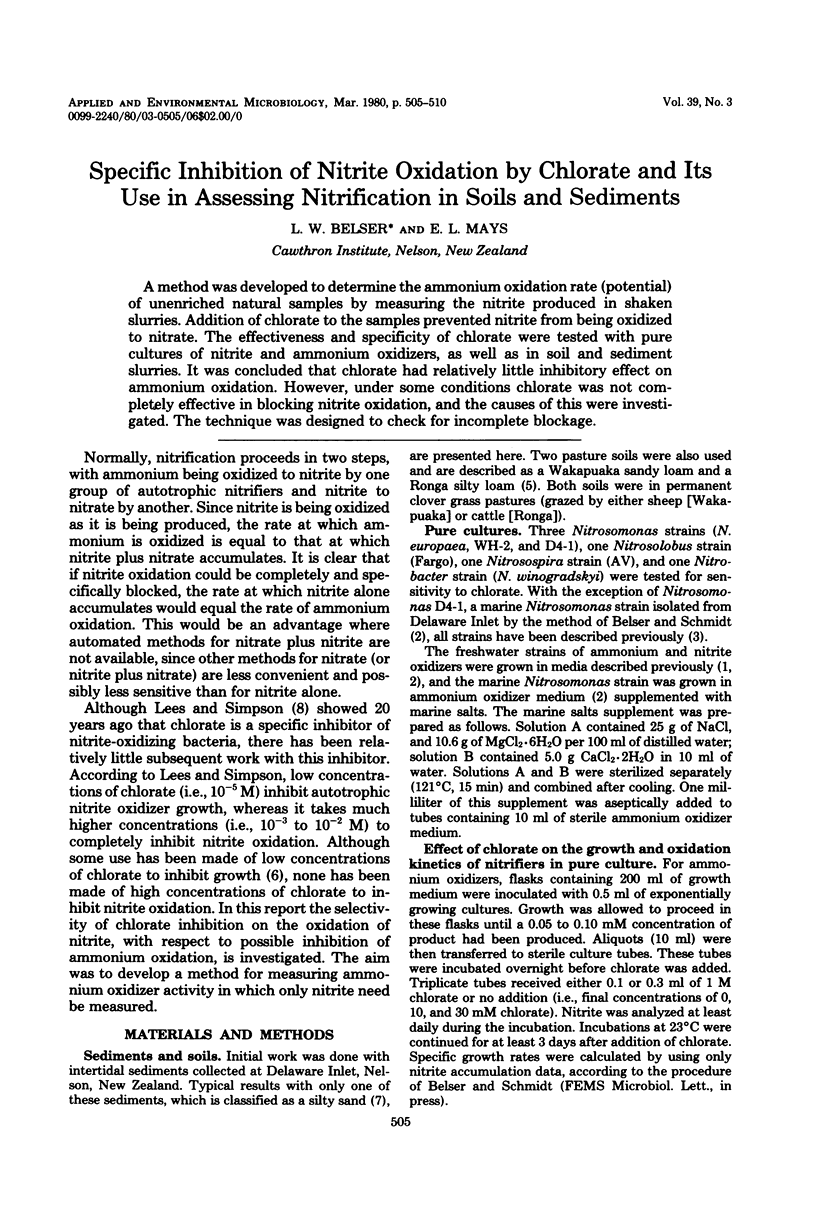
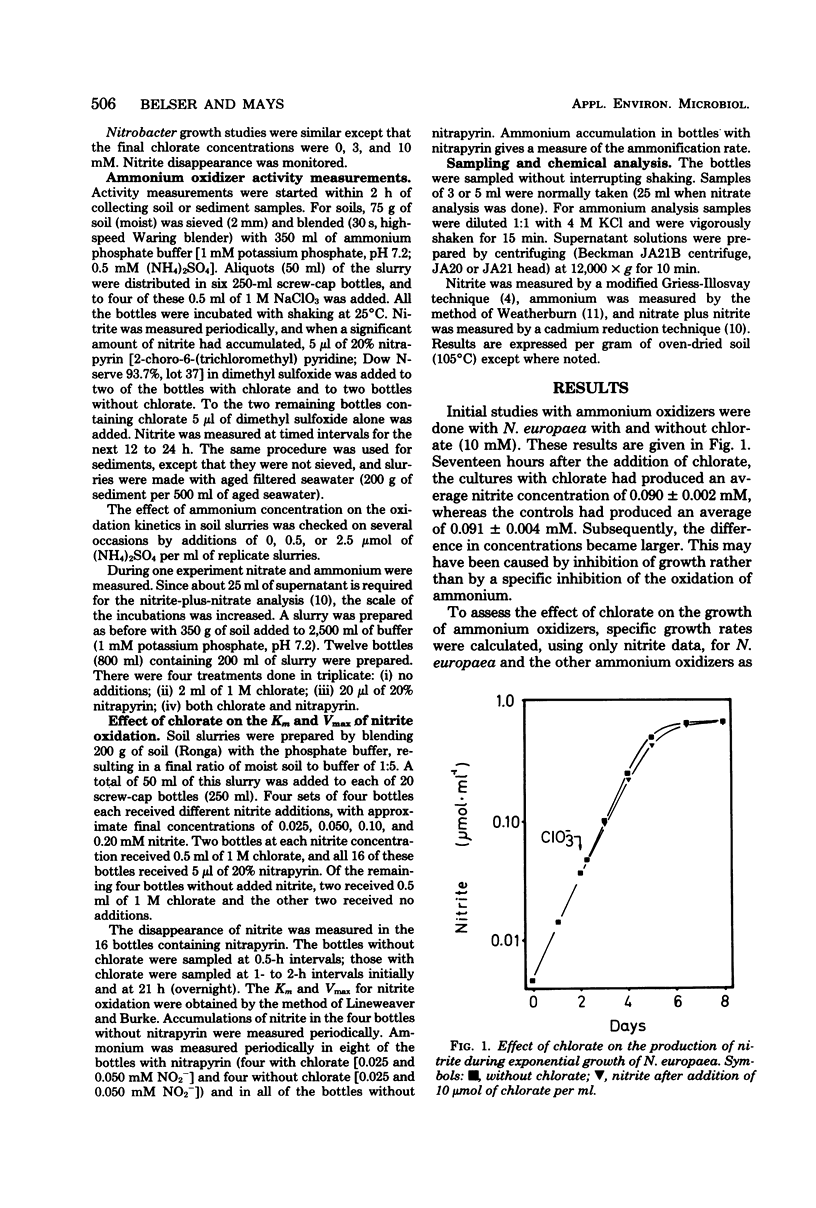
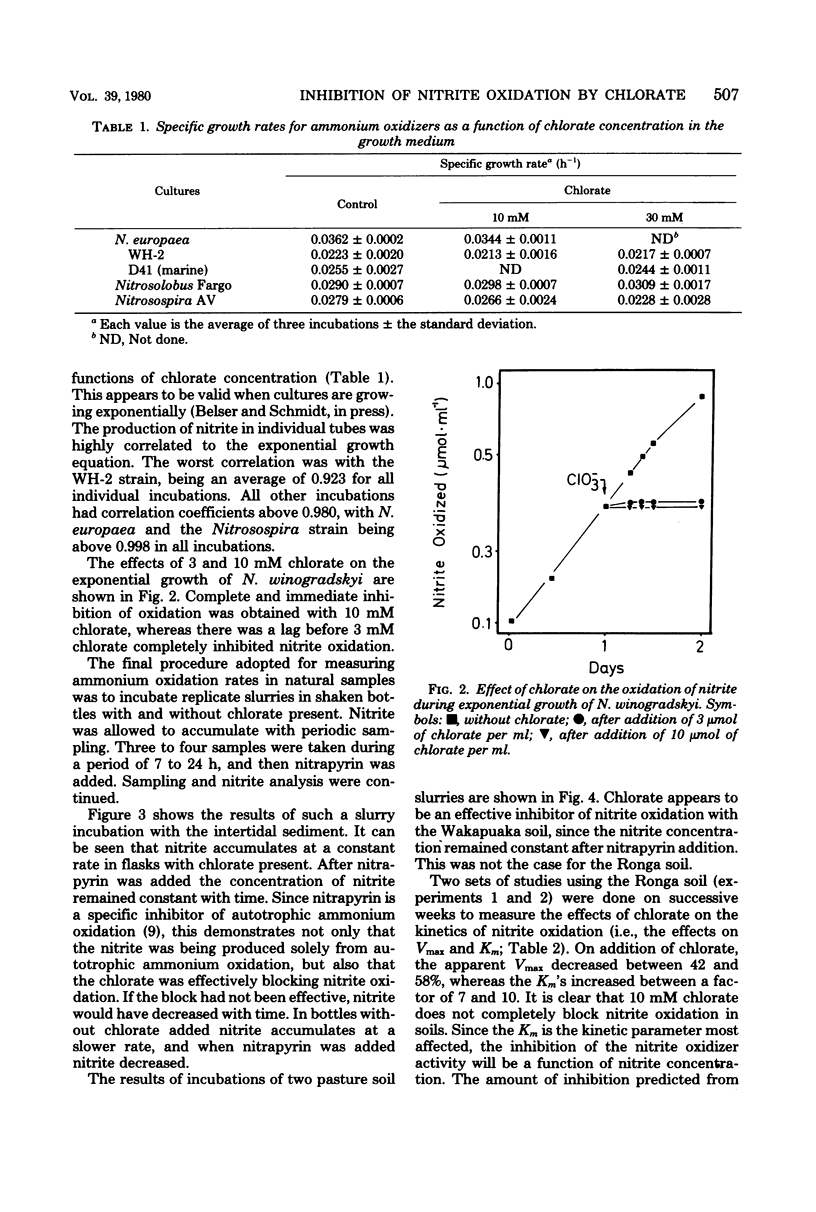
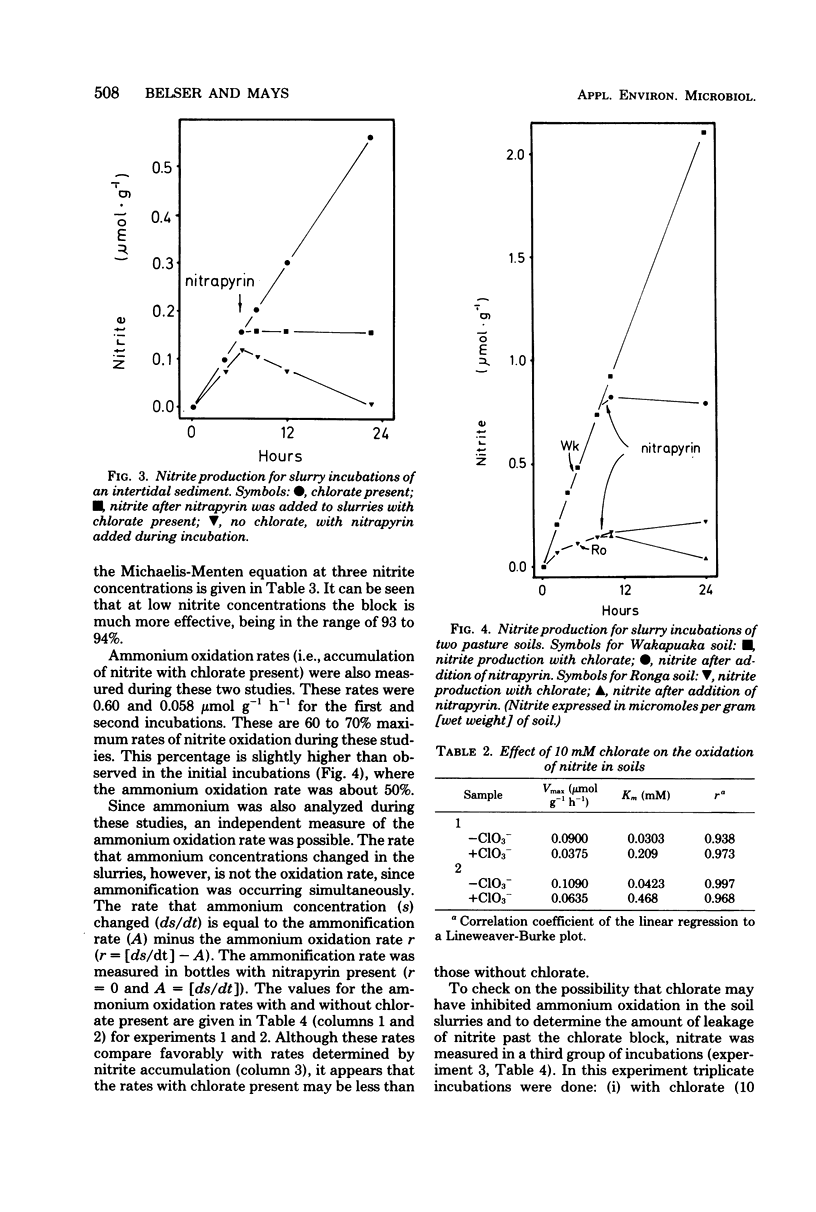
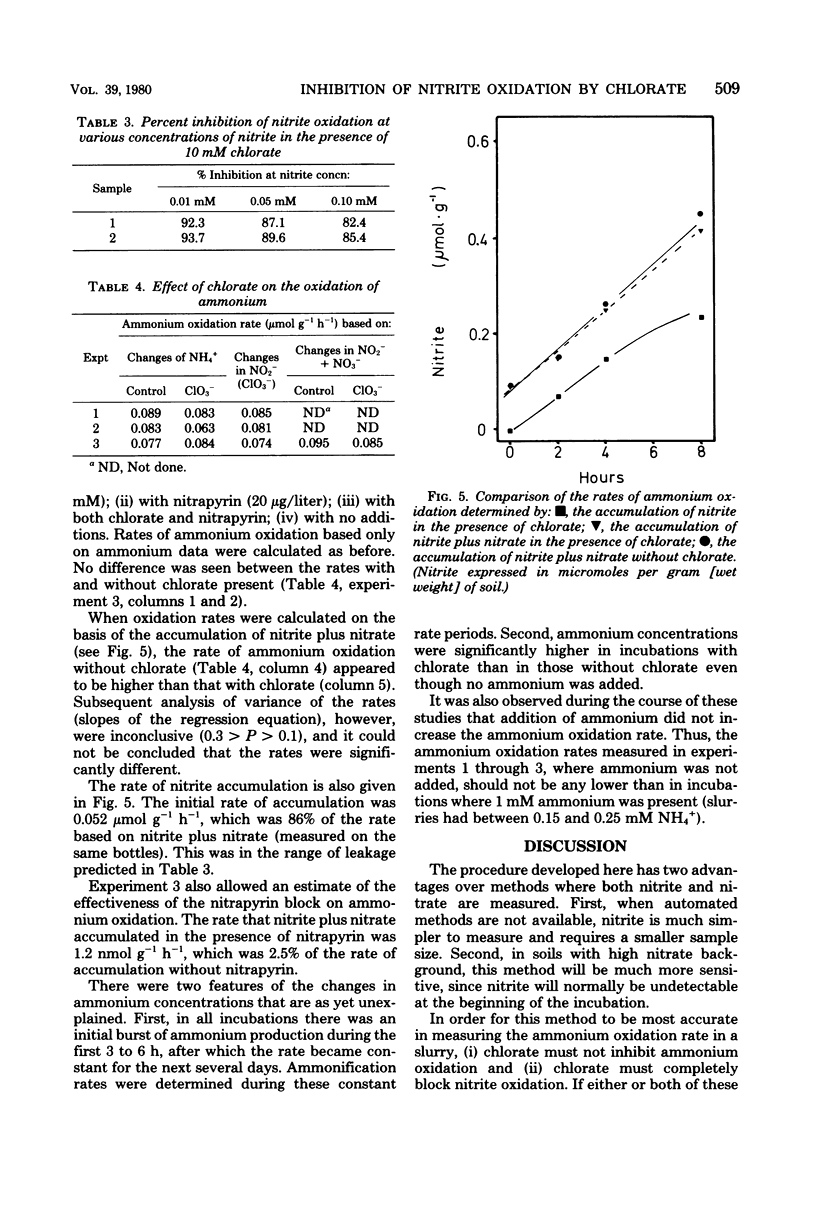
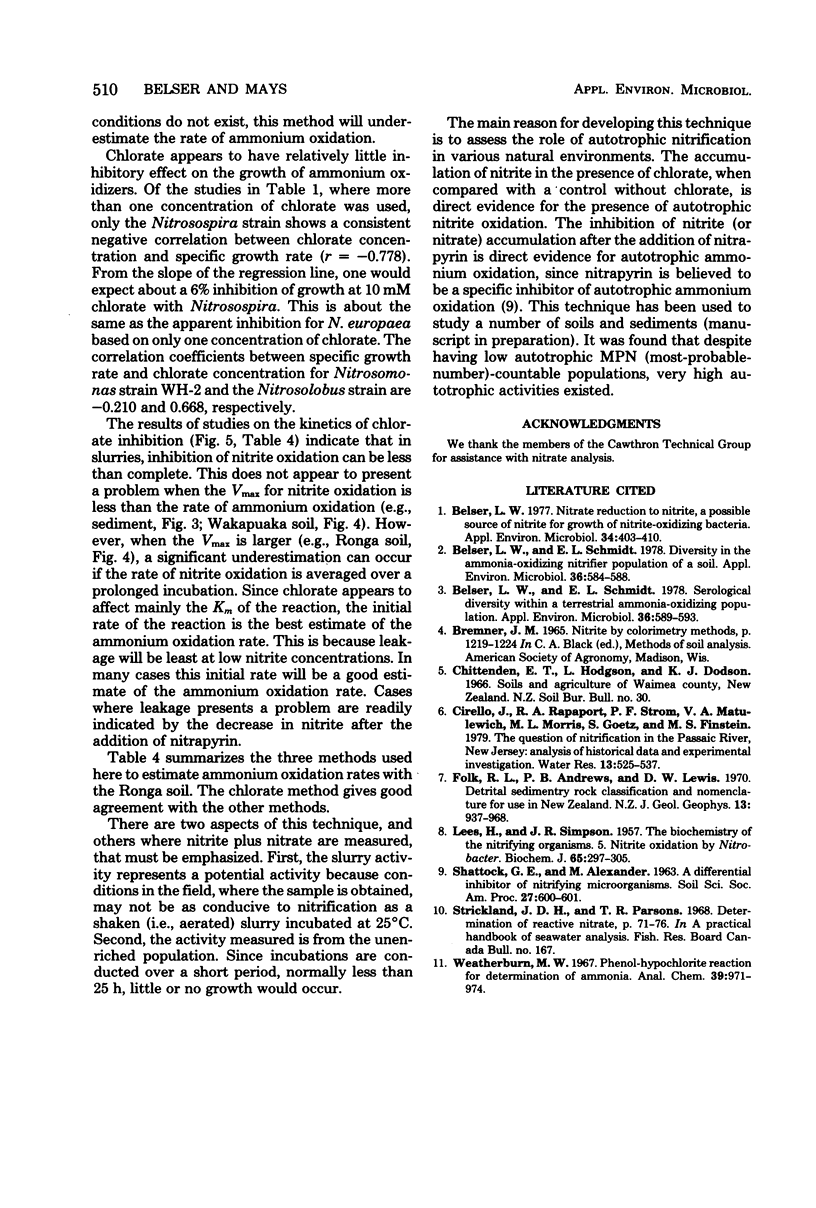
Selected References
These references are in PubMed. This may not be the complete list of references from this article.
- Belser L. W. Nitrate reduction to nitrite, a possible source of nitrite for growth of nitrite-oxidizing bacteria. Appl Environ Microbiol. 1977 Oct;34(4):403–410. doi: 10.1128/aem.34.4.403-410.1977. [DOI] [PMC free article] [PubMed] [Google Scholar]
- Belser L. W., Schmidt E. L. Diversity in the ammonia-oxidizing nitrifier population of a soil. Appl Environ Microbiol. 1978 Oct;36(4):584–588. doi: 10.1128/aem.36.4.584-588.1978. [DOI] [PMC free article] [PubMed] [Google Scholar]
- Belser L. W., Schmidt E. L. Serological diversity within a terrestrial ammonia-oxidizing population. Appl Environ Microbiol. 1978 Oct;36(4):589–593. doi: 10.1128/aem.36.4.589-593.1978. [DOI] [PMC free article] [PubMed] [Google Scholar]
- LEES H., SIMPSON J. R. The biochemistry of the nitrifying organisms. V. Nitrite oxidation by Nitrobacter. Biochem J. 1957 Feb;65(2):297–305. doi: 10.1042/bj0650297. [DOI] [PMC free article] [PubMed] [Google Scholar]


